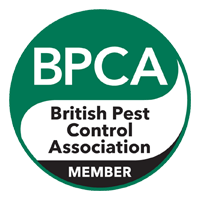Bird Control - Which option is best?
What options do I have and what is best for my budget?
So you have a building? You've got issues with the local 'flying wild-life' making a mess of your roof, ledges, windows, parapets, soffits, etc., etc.....
Sound familiar?
What solutions do I have at my disposal to rid myself of this airborne wildlife? Read on!
Below we give you some ideas and solutions for dealing with birds simply and effectively...
Netting Systems
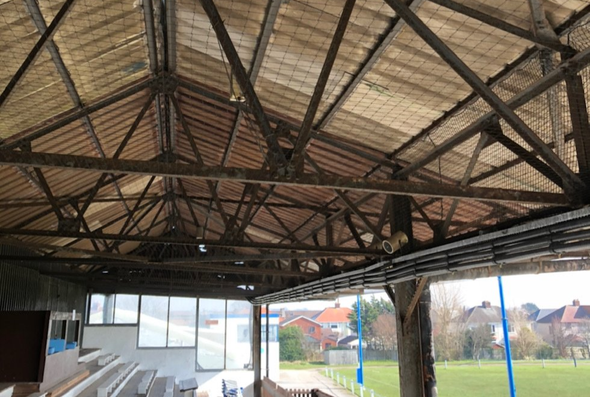
Nylon bird proofing netting is a versatile bird proofing option and is often used to protect vertical, sloping and horizontal areas from bird problems by stopping birds from getting where they shouldn't be. Most bird netting is used to protect the fascias of buildings, but is also very effective in part-covered buildings or structures where birds are a problem. This can include under stadium roofs or warehouse canopies, on in loading bays and high-ceiling units which open to the weather.
Anti-bird netting for buildings simply stops birds getting to roosting or nesting positions, so netting can provide a useful solution as large areas can be covered easily. Fitting should be completed by qualified professionals who are experienced in installing netting solutions. All too frequently this involves working at height in difficult-to-access areas where additional machinery, such as a cherry picker, may be required. Netting installation is, by far, the best DEFRA-approved bird deterrent for agriculture and aquaculture.
There could be a number of reasons why bird netting may be the best solution for bird control. If birds need to be stopped from entering a large cavity area, like the upper roof spaces of large buildings where birds roost and nest, netting will be the best and most cost effective solution
It’s useful where you need to stop birds entering altogether, not just stop them landing. Another key use in town and city situations is where you need to protect the fascia of an area yet still maintain the aesthetic look. It’s not as discreet as post and wire proofing for instance, but it does blend in remarkably well once fitted, and will stop bird from getting to the area completely.
We also commonly fit netting solutions on the roofs of buildings, particularly when they are causing problems around air conditioning units and the like. In this situation we sometimes suspend the nets over the area on poles that act as a suspension system.
This can be highly effective when there is no other viable solution, and is a particularly useful bird proofing solution for the tops of hotels, shops and blocks of flats. In agricultural and aquaculture situations where there is a need to stop birds getting onto crops or at stocks altogether, netting is just about the only viable long term solution, although most of our customers working in these arenas combine netting with audible scaring devices.
Another of the advantages of bird netting is that it can be used to proof against any type of bird, large or small. It’s an effective and eco-friendly bird proofing solution not just for seagulls and pigeons, but also for birds like starlings, blackbirds and sparrows, all which carry disease and can be a real pest, but which are protected while nesting. The type of birds you have problems with will govern what size of mesh we use.
Spike Systems
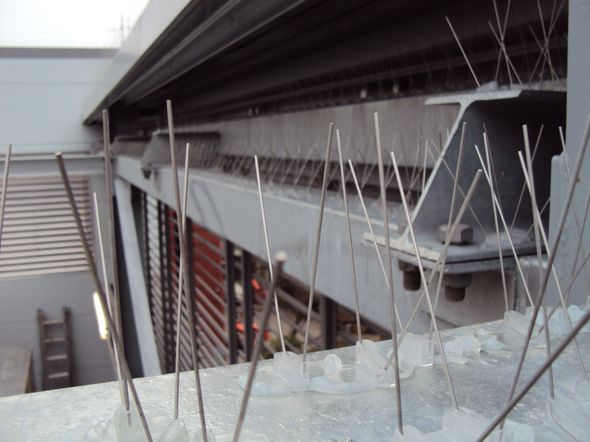
The use of anti bird spikes is the most popular and cost effective method of stopping birds landing and roosting somewhere where they are not wanted, such as on ledges, gutters, chimneys, TV aerials, signage, statues, balconies, walls and lamp-posts. The rigid bird spikes we use on most jobs are manufactured from either stainless steel or a clear and tough plastic, so that they are unobtrusive and long lasting.
They stand around eight inches off a tough base which is fixed to the area that needs proofing with a tough, bespoke bird spike adhesive. Put simply, once fitted with anti bird spikes, the birds can no longer land there, and they move on. Bird spiking has been described as the most effective stand-alone bird deterrent and is endorsed by the Royal Society for the Protection of Birds for use against pigeons.
Pigeon spikes and seagull spikes are not the same thing, so please call us to discuss the birds you are having problems with and we will advise accordingly
Most bird spikes are either made from tough plastic or stainless steel. There are many types, with different densities of bird spike per strip influencing the price. As well as the standard bird protection spikes we use on most jobs, we also supply and fit bespoke bird spiking where aesthetics is an all-important consideration
An example of this is where we have needed to proof in public areas like town squares, where the rather wonderful looking spider spike (pictured), or Daddy Long Legs, is particular popular for customers looking at bird proofing for lamp posts. For customers concerned grappling with the age old question of ‘how to stop birds roosting on my chimney’, the chimney strap (also pictured) is particularly effective.
Pin & Wire Systems
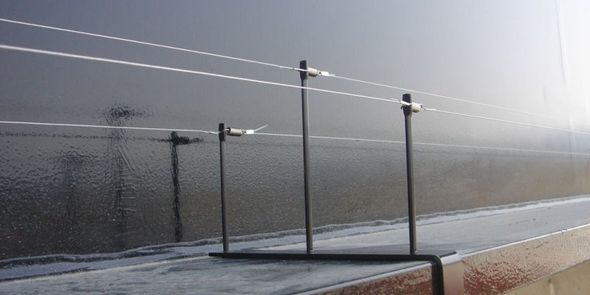
An almost invisible tensioned bird wire system to prevent birds perching without damaging the aesthetics or construction of the building.
Eco's Bird Wire is one of the most discrete and widely used anti-perching systems available in the UK. It is effective to prevent both feral pigeons and seagulls from perching on the ledges and parapets of buildings.
Eco’s Bird Wire System consists of a fine, nylon-coated, spring-tensioned stainless-steel wire supported by stainless steel posts, which are fixed into stonework using nylon anchor rivets.
The posts are available in various sizes and stainless-steel split pins can be used to fix the wire into window reveals. The posts, springs, wires and split pins are made of corrosion resistant 316-grade stainless steel.
Eco’s Bird Wire is a very versatile Bird Control System and a variety of special components and brackets are available to enable it to be fitted to almost any surface, such as roof ridges and metal cladding, making it a Bird Deterrent System suitable for many applications.
Our team of experienced Project Managers and nationwide Installers and Technicians are able to provide you with bespoke, professional advice and service to create a Bird Deterrent solution that works for you and your buildings.
So what should I do?
They're 3 great solutions, all of which can be done on a number of budgets so from a cost perspective, one isn't better than the other! Ease of application and fitting isn't either as most are used at height and will require access equipment at the installation stage.
So what do we suggest?
Give us a call on 0800 975 5581. We've been installing all of these bird systems for over 30 years so have a wealth of experience working with private, commercial and local government buildings all over the UK. We'll do a free site survey, recommend our advised solution and let you have the costs for the project quickly and efficiently. What more could you want?
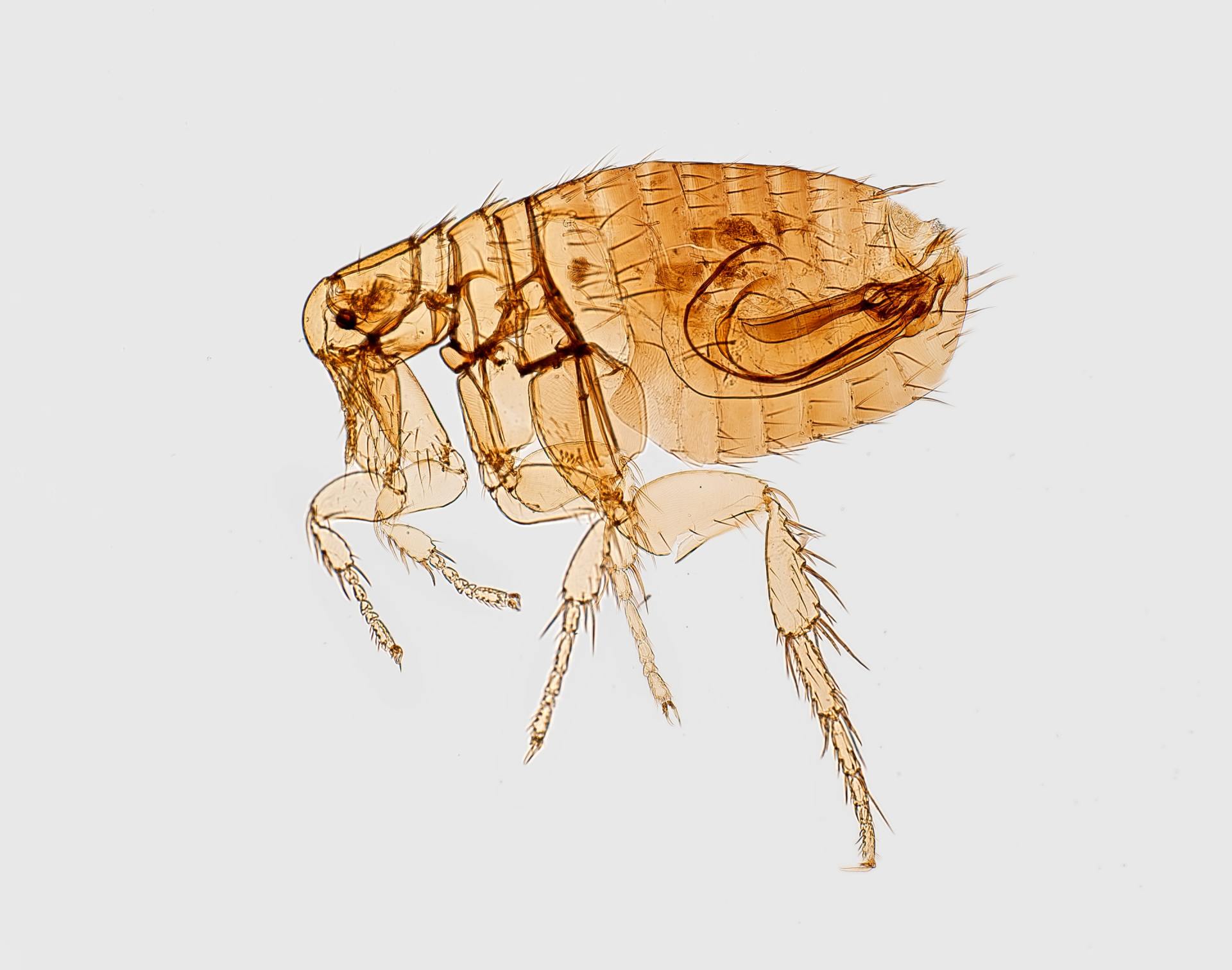
By Clearwell
•
09 Nov, 2020
Pest control experts are urging people to be aware of the threat to health posed by fleas.
The jumping parasites, which can leap more than a foot from one host to another, can cause problems for both humans and pets.
Skin complaints and the exacerbation of respiratory illnesses are some of issues flea bites can cause according to the British Pest Control Association (BPCA).
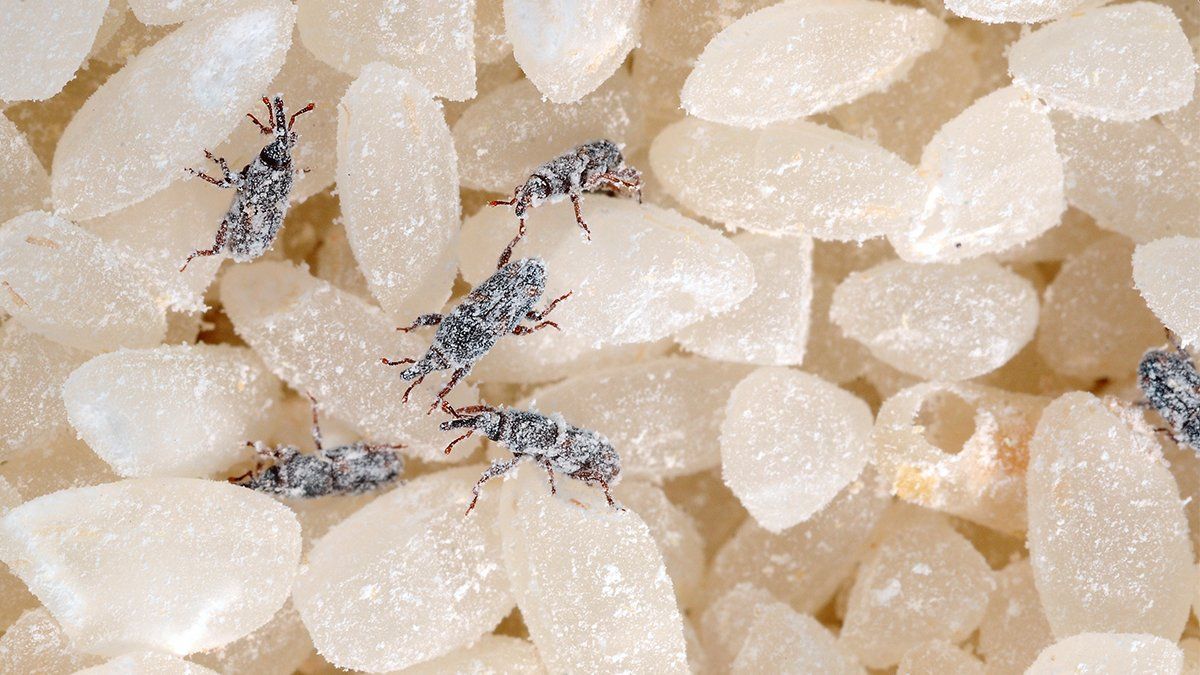
By Clearwell
•
12 Oct, 2020
Have you brought something home from the shop riddled with insects? Opened an old bag of flour to find it’s tainted? Are you a manufacturer of food products and you want to keep them safe from infestation?
Stored product insects (SPIs) are one of the top pest concerns in food production and storage across the globe.
Whether you’re thinking about doing some DIY pest control or you’re looking to enlist the help of a professional pest management company, this guide is for you.
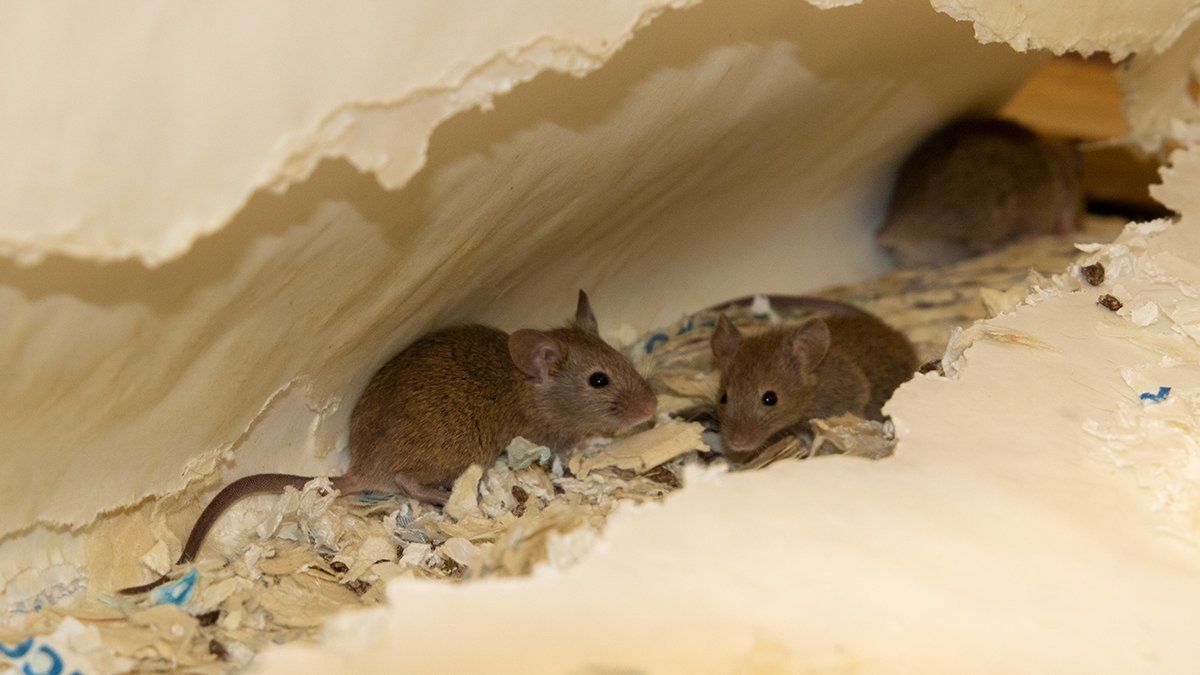
By Clearwell
•
14 Sep, 2020
Mice are a part of British wildlife - but when they take up residence with you, they can be a cause for concern.
Active all year round, mice are one of the most common pest species in the UK.
Whether you’re thinking about doing some DIY pest control or you’re looking to enlist the help of a professional pest management company, this guide is for you.
Clearwell Pest Control Services
© 2024

